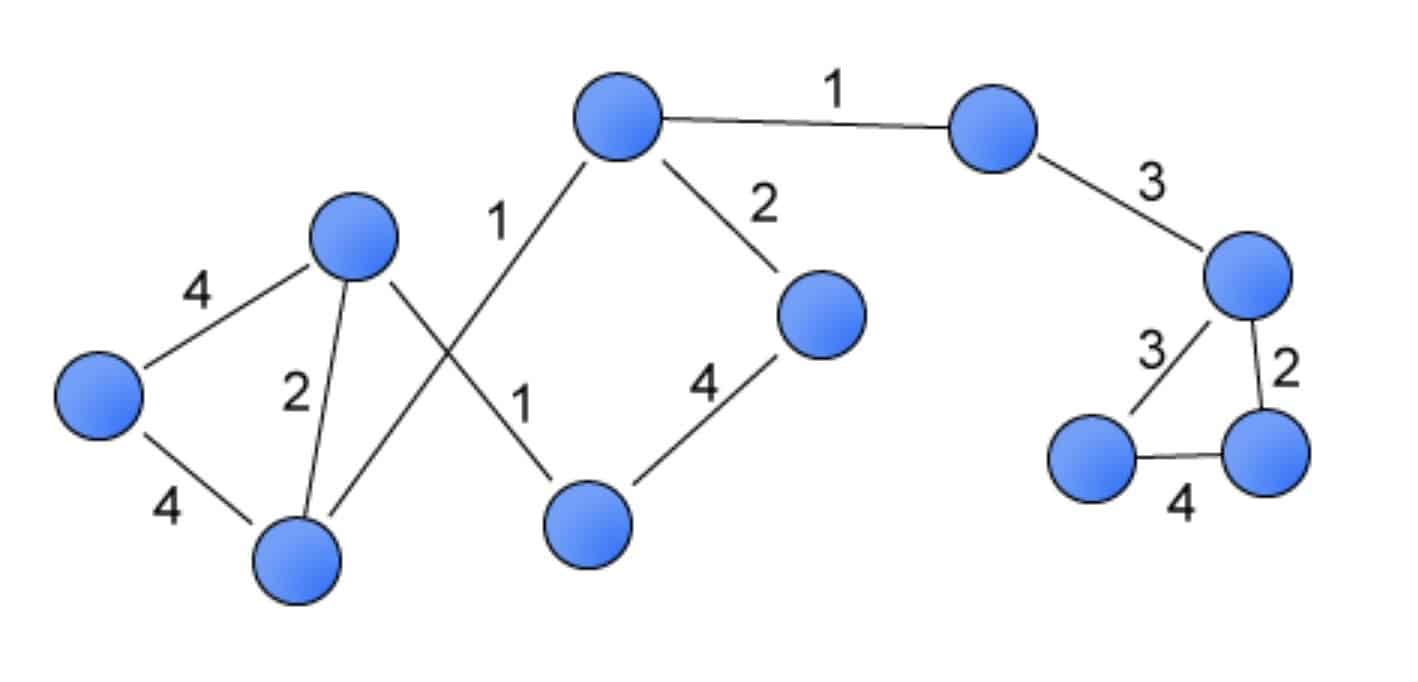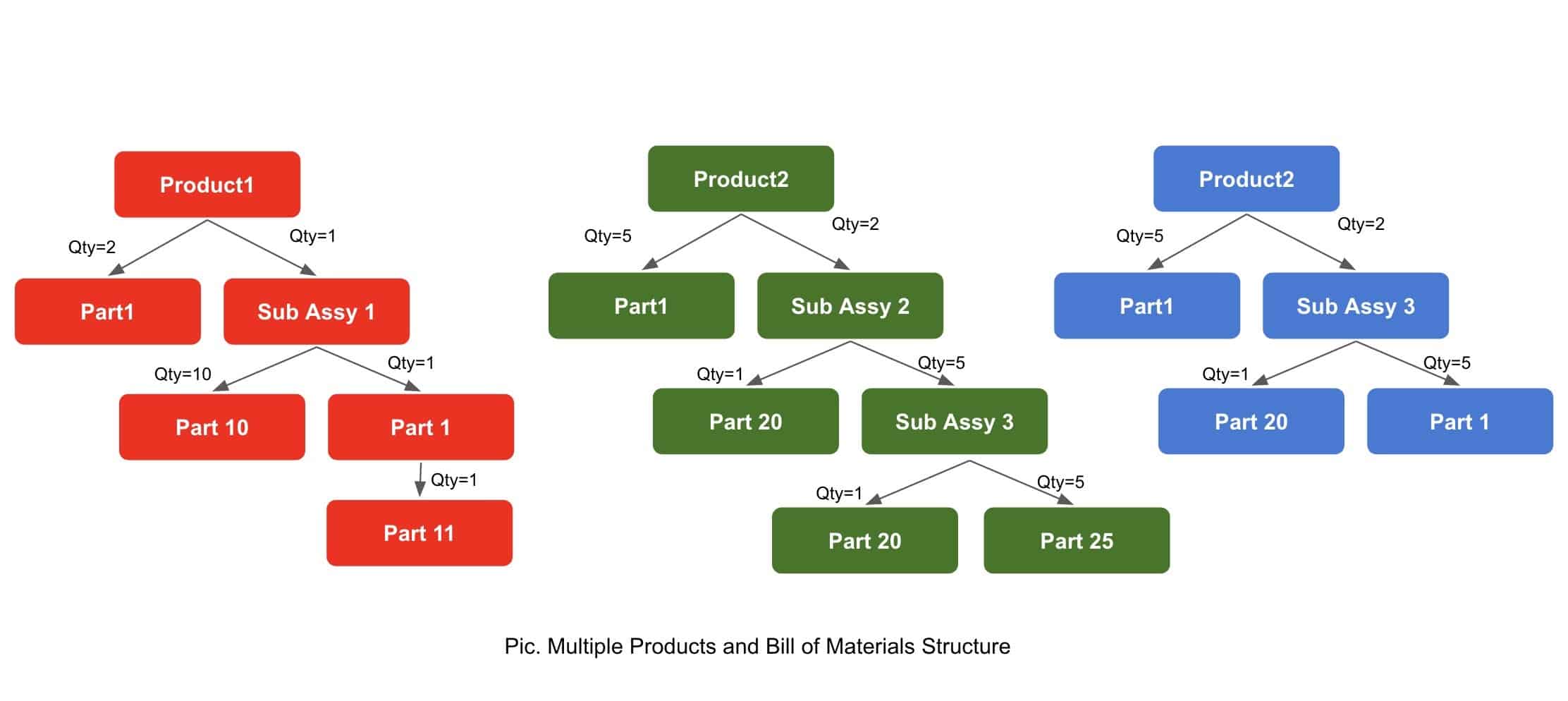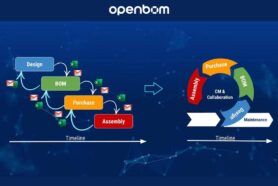
Ask anybody about a bill of materials and the answer will be – this is a list of parts you need assembly the product. I’m going to change your perspective on bill of materials in these three articles. I’m going to introduce you to the intersection of three topics – the Bill of Materials, Graphs, and Networks.
A bill of materials (sometimes called production structure) is a tree-like structure that lists all the components requirements to manufacture one (or many) products or top-level assemblies. Typically it presented as a tree structure with hierarchical relationships. This is how you typically recognize it.
At the same time, a network is a set of objects (called nodes and vertices) that connected together. The connection between the nodes is called edges or links. In math, networks are often referred to as graphs).
According to Wikipedia, a Graph is a structure amounting to a set of objects in which some pairs of the objects are in some sense “related”. The objects correspond to mathematical abstractions called vertices (also called nodes or points) and each of the related pairs of vertices is called an edge (also called link or line).[1] Typically, a graph is depicted in diagrammatic form as a set of dots or circles for the vertices, joined by lines or curves for the edges. Graphs are one of the objects of study in discrete mathematics.
I have no intention to teach you the theory of graph in this blog but want to ask you to pay attention to a weighted graph or a network[9][10] is a graph in which a number (the weight) is assigned to each edge.[11] Such weights might represent for example costs, lengths or capacities, depending on the problem at hand. Such graphs arise in many contexts, for example in shortest path problems such as the traveling salesman problem.

A weighted graph can be a very interesting object as it can represent many things in bill of materials, such as for example, quantity or part usage in other assemblies.
Network and graph theories can bring many abstractions and become a very useful modeling tool if we can connect them to real-world product structures, companies and how product structures (BOMs) are used by companies for engineering manufacturing production and procurement.
Bill of Materials analysis can be used in a wide scope of manufacturing business problems – personalized manufacturing, product configurations, new product development, forecasting, and supply chain analysis. In a modern digital world, the usage of networks and bill of materials can be significantly expanded into e-commerce and marketing.
Think about exploring BOM data as a graph. It can provide information about critical materials, assemblies and help to make an assessment of how it can affect production or availability of the product in the market. Unfortunately, this analysis is usually very hard to do because of the high level of data fragmentation – check my previous article about expanding of product data silos.
Efficient data management can solve some of these problems. For example, modern graph databases can help create a better representation of the bill of materials and dependencies. But this is only one step. New cloud multi-tenant data management platforms help you to make one step forward and provide a pragmatic approach to connect silos of information that never been connected together. Suppliers, contractors, component providers, and OEM manufacturing companies.
The picture below demonstrates 3 bills of materials for 3 products. Pay attention, even each product marked with different colors, these products might have common parts and assemblies.

In my next article, I will demonstrate to you how multiple bills of materials can be converted into a network and how OpenBOM can take advantage of this transformation.
Conclusion
Bill of Materials usually presented as lists of parts and assemblies that actually can be transformed into a very sophisticated and intelligent network structure. Using graph data representation, the theory of graphs and network maths, modern cloud data management systems can glean intelligence and information that cannot be obtained from Excels and old legacy databases.
In the next chapters of this article, I will speak about BOM to graph and network transformation and show how OpenBOM can help you to use it for product analysis, planning, and other engineering and BOM for manufacturing tasks.
Check what OpenBOM can do today by subscribing to OpenBOM here or request a trial version.
Best, Oleg @ openbom dot com.
Want to learn more about PLM? Check out my Beyond PLM blog and PLM Book website
Read OpenBOM customer reviews on G2 Crowd to learn what customers are saying about OpenBOM.
Join our newsletter to receive a weekly portion of news, articles, and tips about OpenBOM and our community.









